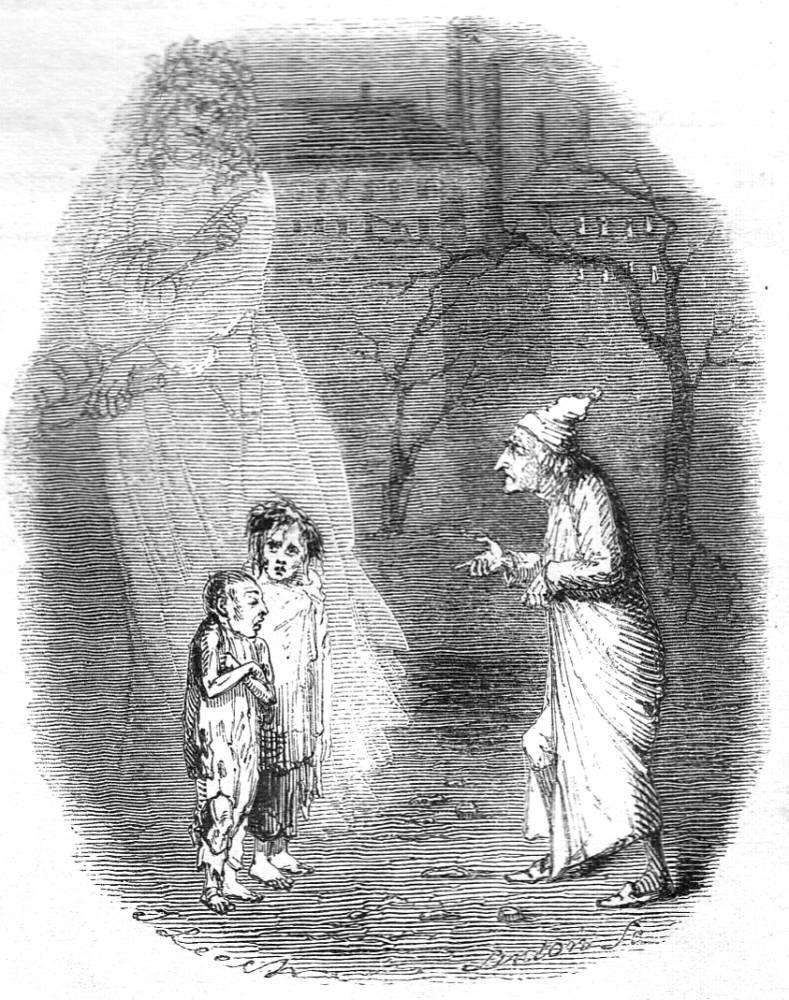Created by Yousef Farhang on Thu, 10/15/2020 - 10:57
Description:
"Ignorance and Want" is one of John Leech's 8 illustrations for Charles Dickens' 1843 novella A Christmas Carol. The three quartered paged, black and white wood engraving vignette occurs in Stave three where Scrooge is confronted by his own greed with the help of the two children who accompany the second of the three spirits. The two children, called Ignorance and Want, symbolize the uncontrolled booming of the industrial and capitalistic society of the Victorian era. Furthermore, the factories illustrated in the background of the image allow Leech to further extend the social issues raised by Dickens in the text. In fact, this illustration explicitly calls out the working conditions in the factories in which children as young as eight years old would work for 16 hours a day. This meaning is made clear as Leech chose the perfect illustration to include the factories in since Ignorance and Want already point out Britain’s apathic social attitudes towards the poor, and therefore, by placing the factories in the background of this image, Leech assists the reader in making the connection between the unethical working conditions of the factories and the young children who were employed in them. Furthermore, the image further highlights the cultural issue of child labour by following the text’s description of the children. The children are described as “meagre, ragged, scowling, wolfish” in the text, and Leech is able to illustrate such description with his art style of realism in which the children do in fact look unhuman, and animalistic or “wolfish” for that matter. Therefore, Leech is able to both subvert the text with his interpectoral narratology (including factories in the background even though they were not mentioned in the text) while also respecting the text’s authority in his portrayal of the two children by closely following Dickens’ description of the children. In essence, Leech’s subversion of the text does not challenge the authority of Dickens, it rather adds to Dickens’ own concern with how the working class and their children were being treated.
Principle Sources:
http://www.victorianweb.org/art/illustration/carol/6.html
http://www.victorianweb.org/history/hist8.html
https://studio.covecollective.org/anthologies/eng910-victorian-illustrat...
Copyright:
Associated Place(s)
Timeline of Events Associated with John Leech "Ignorance and Want" A Christmas Carol (1843)
Part of Group:
Artist:
- John Leech


